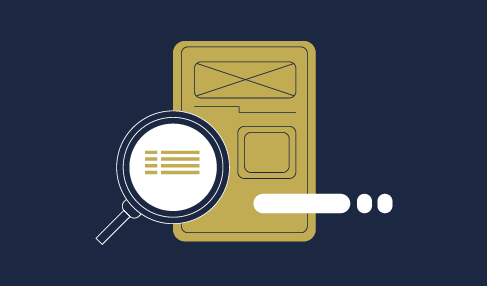Ever wonder why smartphones are such a necessity for us today and not a luxury anymore? Your heart skips a beat when you think you lost it. These devices are loaded with mobile applications for every activity of our daily lives – food delivery, cabs, fitness, socializing, banking, shopping, travel, education, To-Dos, music, entertainment, and whatnot! Businesses are increasingly turning to mobile apps to create more value and improve customer experience.
Now, imagine if your app is to compete with 3.48 million apps in the Google Play store and 2.22 million apps in the Apple App Store. It will only win over customers if it has an attractive, user-friendly UI, faster loading, high performance, chat support, customization, and plenty of such factors. Therefore, understanding and choosing the right mobile application development technology is crucial for building successful mobile apps desired by the users.
To help you out, here’s a curated list of the top 7 mobile app development technologies that can best assist your mobile app development.
- Flutter
- React Native
- Python
- Java
- Swift
- Kotlin
- R Programming
Let’s get into the details of each.
Top 7 Mobile App Development Technologies
- Flutter
Flutter is the fastest-growing cross-platform mobile application technology. Made by Google, it is an open-source SDK (software development kit) that uses Google’s in-house language, Dart. Its single codebase allows programmers to write code only once for multiple platforms, speeding up the development and saving hiring costs. Moreover, Flutter apps have native-like smooth execution and high performance because Dart easily compiles into native code.
Its Hot Reload feature instantly reflects code changes, allowing developers to easily experiment, build UI features, test, and debug. It also has a wide catalog of ready-to-use widgets, including built-in beautiful Material Design, Cupertino widgets, and rich motion APIs, enabling the development of expressive apps with beautiful UIs even for complex ideas. What’s more, Flutter is free to use, has a steep learning curve, and has strong developer community support. Popular apps developed with Flutter are Google Ads, Xianyu by Alibaba, and more.
- React native
React Native is the most popular cross-platform mobile app development technology used globally. It is a Javascript-based, open-source framework developed by Facebook, with a best-in-class library of pre-built components. Both Android and iOS apps can be created with a native-like look, feel, and function by using a single codebase, eliminating the need for separate teams to maintain separate codes. Thus, it allows creating platform-specific app versions with ease and saves effort, time, and money.
React Native also supports hot and live reloading, letting you iterate at lightning speed, and thus, easing testing and development. Additionally, it offers a wide range of native-like UI components, and it supports diverse IDEs and third-party plugins. Instagram, Airbnb, and UberEats are some famous apps developed with React Native.
- Python
Python is one of the most commonly used mobile programming languages, with all the elements you’d need to build feature-rich, scalable applications quickly across multiple platforms. It is an open-source, high-level object-oriented programming language that is easy to use, learn, and implement. With its simplicity and clean structure, developers can create new codes quickly and easily with fewer lines.
The language comes with many libraries and frameworks, built-in debuggers, GUI programming support, and a large developer community. With popular Python frameworks like Kivy and BeeWare, developers can easily transform one piece of code into different versions to work with iOS, Android, or any other platform. YouTube, Pinterest, and SurveyMonkey are some apps developed with Python.
- Java
Java is a favorite among developers for building applications for Android. However, both Android and iOS mobile applications can be created with Java. It is a platform-independent, object-oriented language known for its high-end security.
This easy-to-learn and easy-to-use language boasts extensive open-source libraries, excellent documentation, and wide community support. With the help of its rich libraries, developers can effortlessly build apps that can run on multiple platforms in minimal time. It also requires low investment as it is effortless to learn for a developer, and code written once can be run anywhere. Telegram, VLC media player, and SeaWeather are some examples of apps made with Java.
- Swift
Swift is a developer’s preferred mobile app development language for iOS. It is an open-source, general-purpose programming language developed by Apple for macOS, iPadOS, watchOS, tvOS, Linux, and a few other platforms. It is a powerful and intuitive language that has made iOS app development easier and less time-consuming than before, with fewer crashes.
Swift was designed for safety, with clean yet expressive syntax, and can produce scalable applications that run at lightning speed. It has exceptional modern features, requires much less coding, and is easier to understand, which allows for a flexible, fast, and smooth development process. It is the first industrial-quality language that is expressive and enjoyable while scripting. LinkedIn and Lyft were developed using Swift.
- Kotlin
Kotlin has risen in popularity over time. It is a cleaner, neater version of Java created by developers specifically for building Android applications. Now supported by Google, it is used to develop advanced mobile applications for Android and iOS with a single codebase. It is a statistically typed, general-purpose language that has interoperability with Java and access to Java libraries.
It requires less code combined with greater readability, is very easy to learn, and has excellent community support. It is safe, concise, and tool-friendly for Android as well as iOS app developers. Kotlin has been used by many startups and Fortune 500 companies, including Netflix, Trello, Evernote, Autodesk, and more.
- R Programming
R has also made it on the list of the most popular programming languages, and it can be used to develop robust mobile applications. It is an open-source programming language and environment for statistical computing and graphics. It is platform-independent and offers huge built-in libraries and frameworks which facilitate easy, flawless, and effortless mobile app development.
R is one of the best languages for developing powerful data analysis and machine learning algorithms. It is compatible with different platforms and supports cross-platform app development. R can be best used to create beautiful animation, graphs, and multiple UI elements in your mobile app. Google, Facebook, Twitter, and Uber are some famous companies using R.
Concluding Remarks
The above list of trending mobile app technologies was put together by considering all the attributes of a successful app and to assist your cross-platform app development process. These options will help build robust and scalable apps for your business without burning a hole in your pocket. So, whether you decide to contact a mobile application development service company or decide to hire developers for your project, make sure you know your technology well.





